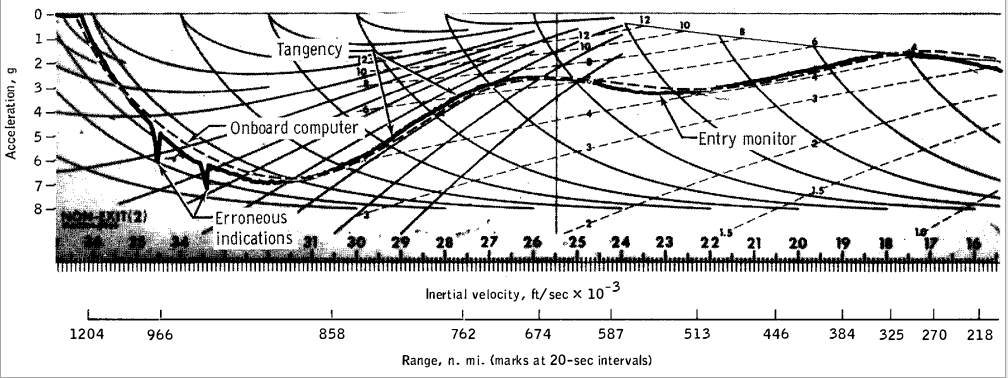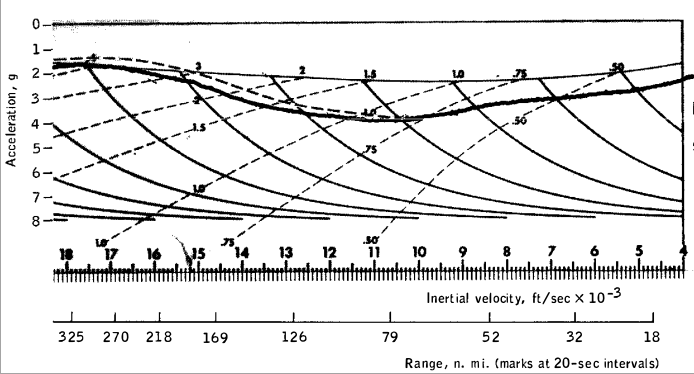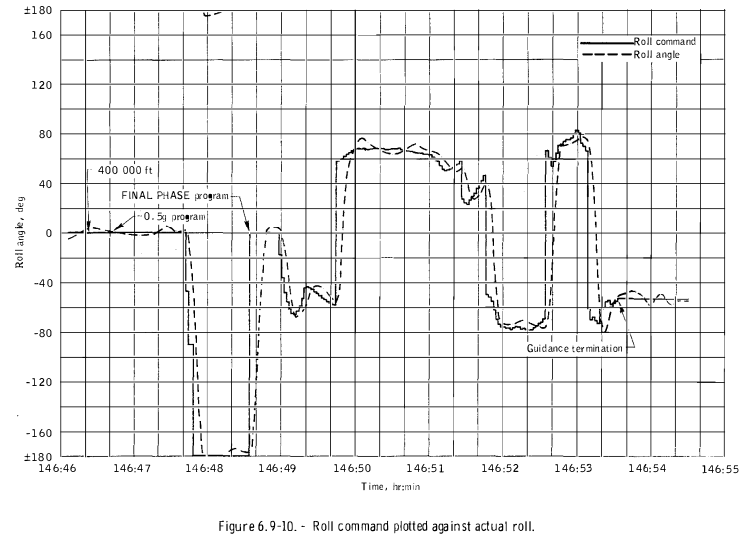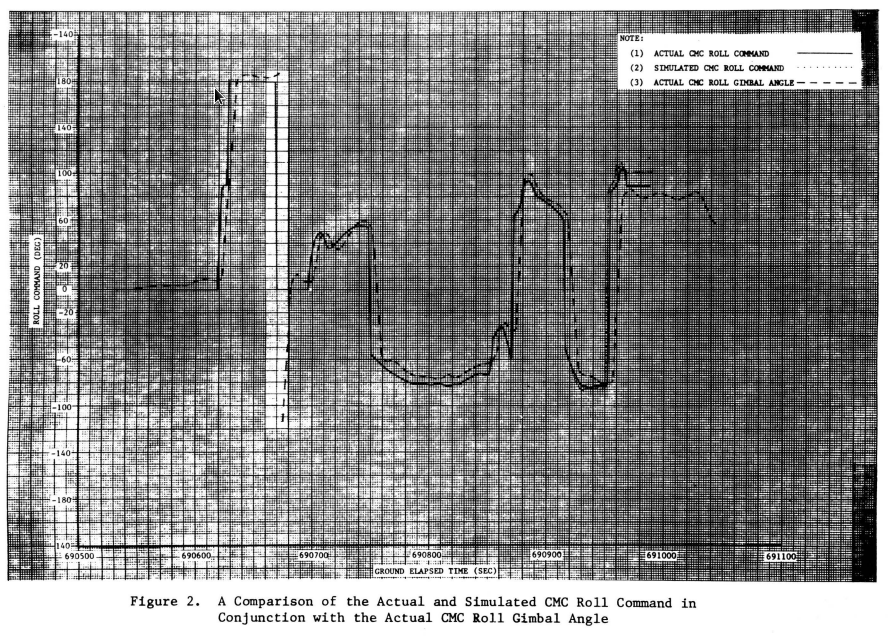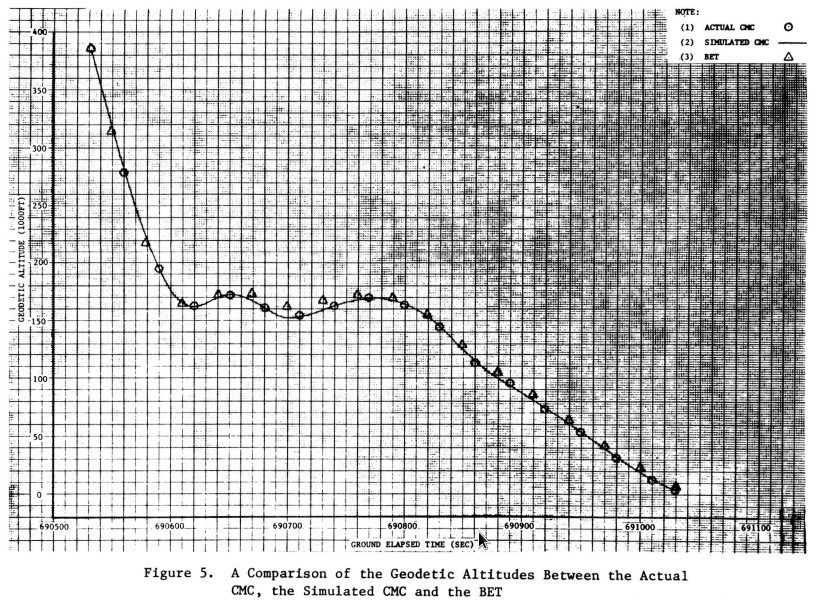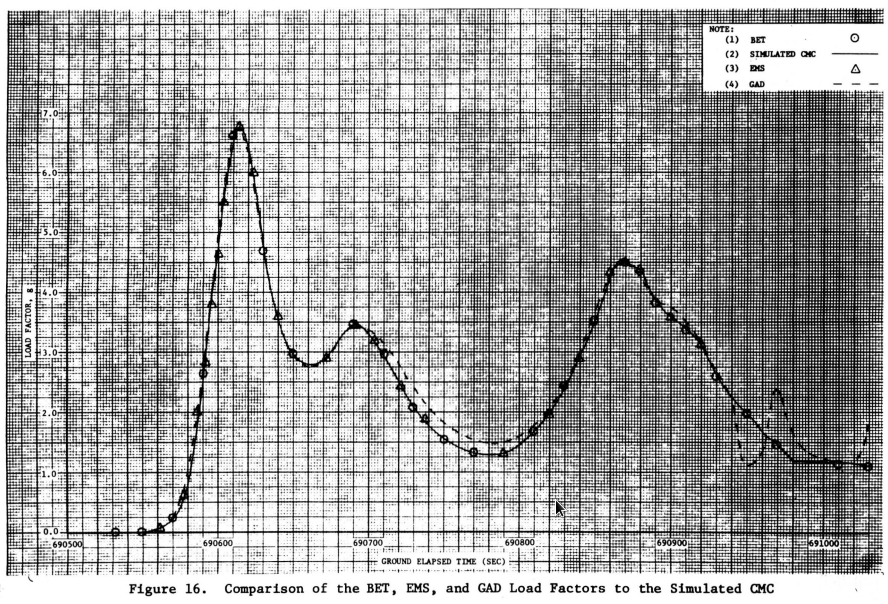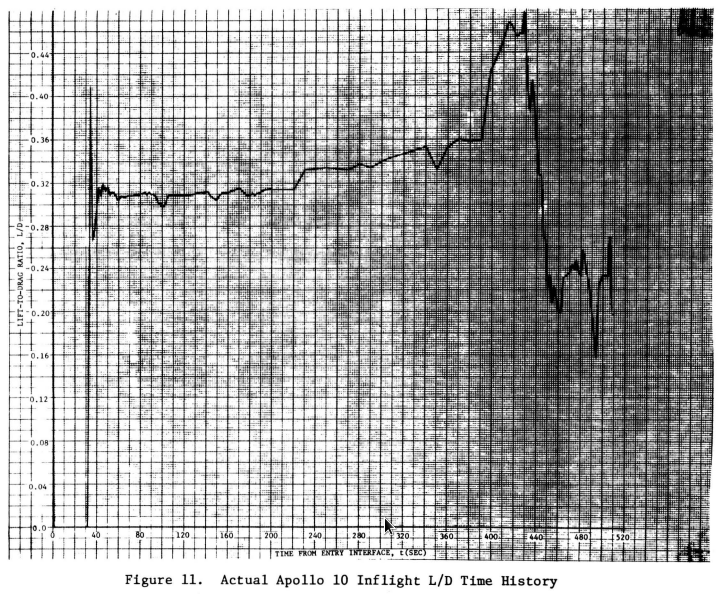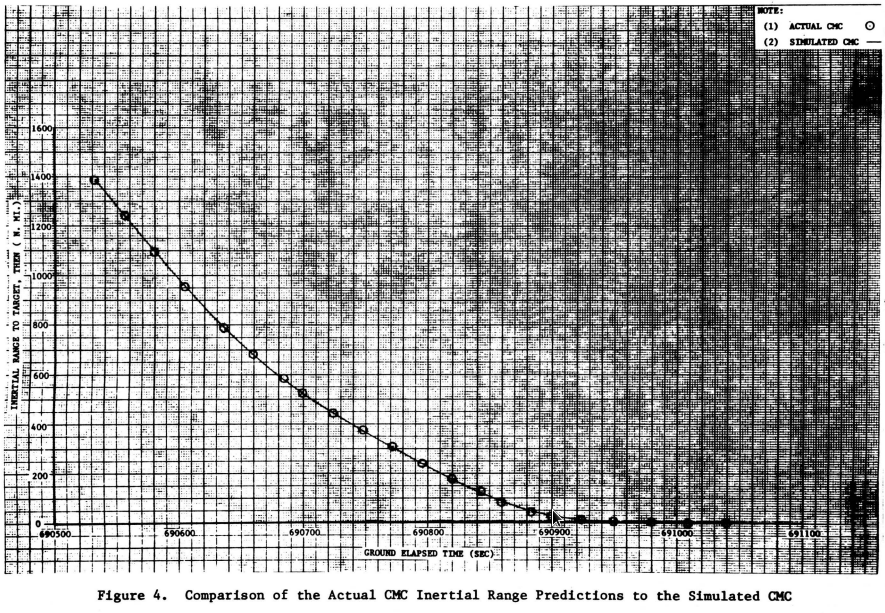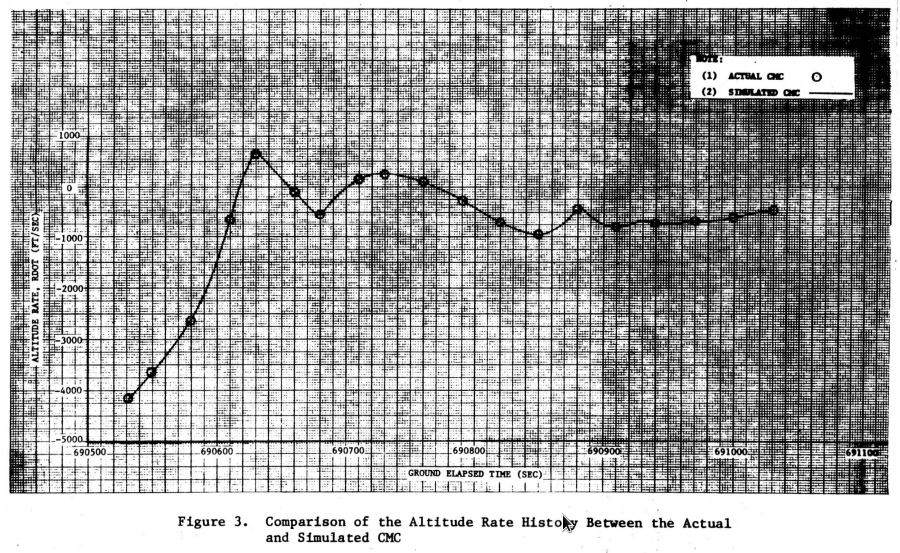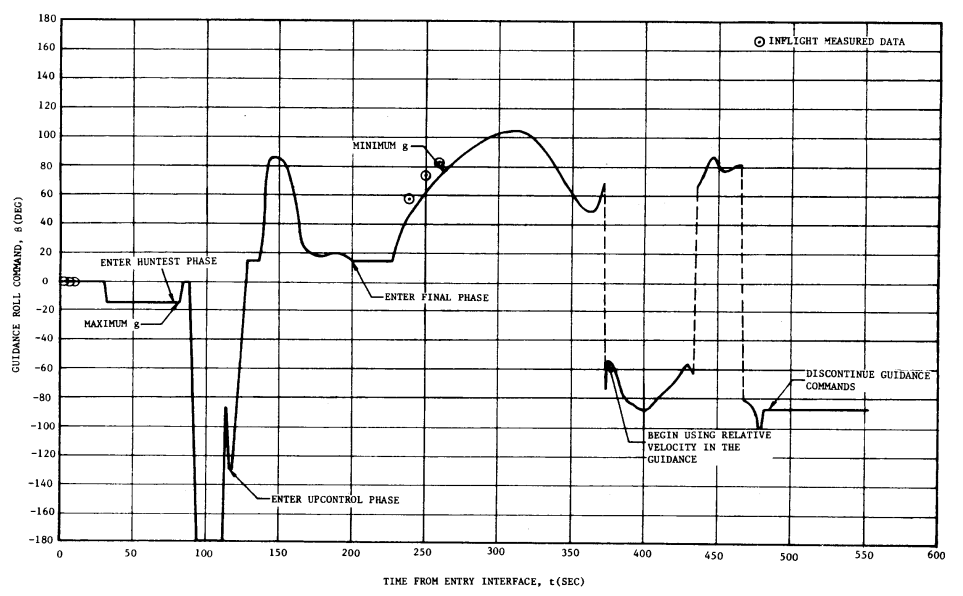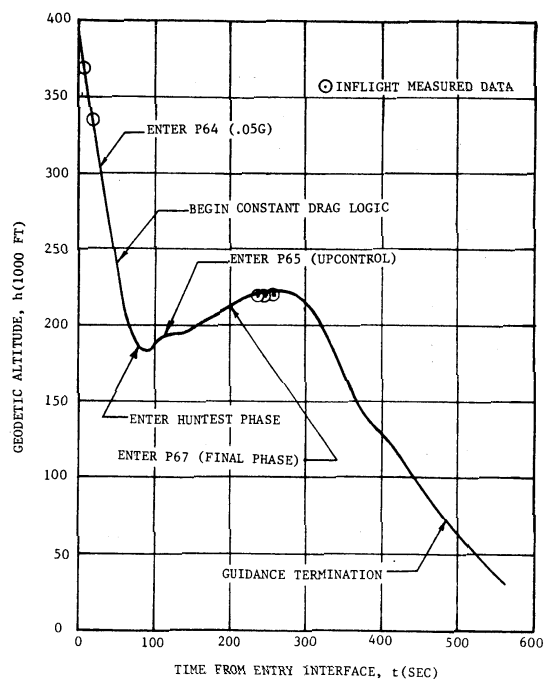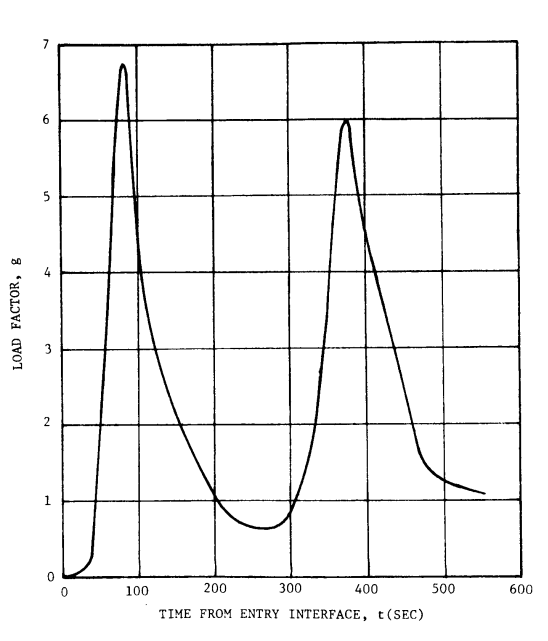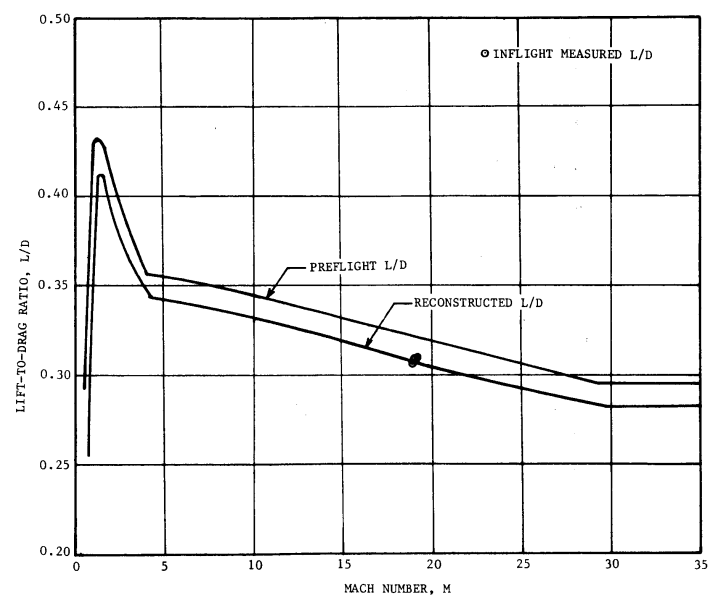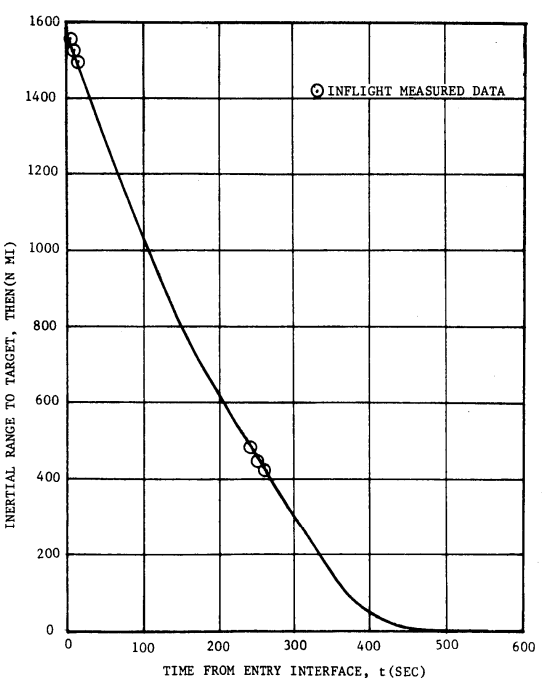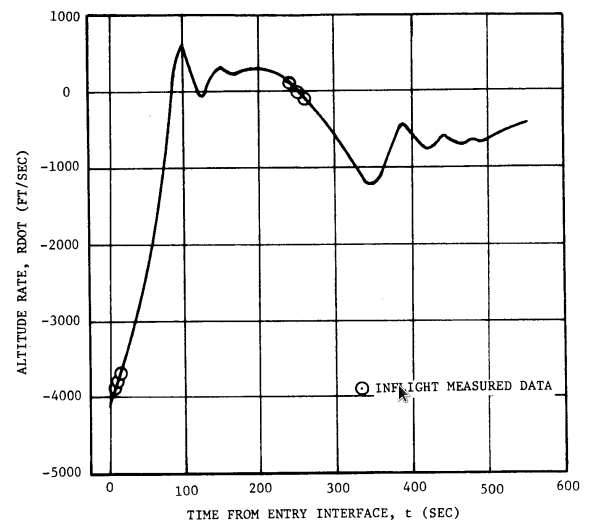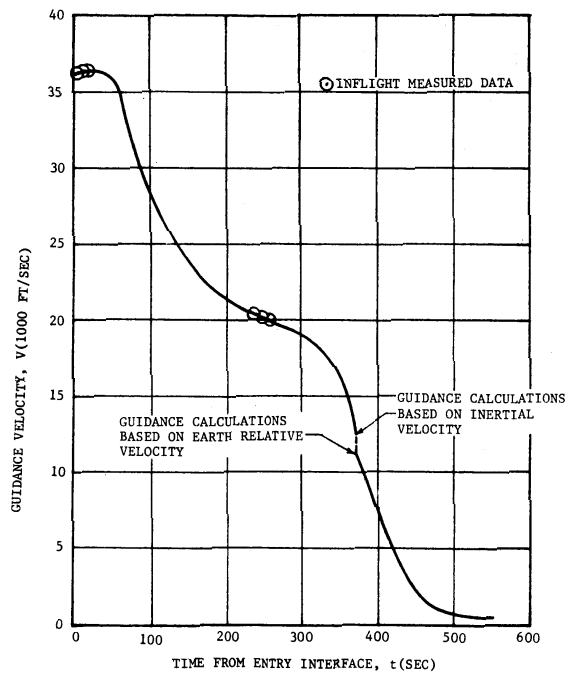|
Size: 5358
Comment:
|
Size: 5727
Comment:
|
| Deletions are marked like this. | Additions are marked like this. |
| Line 5: | Line 5: |
Useful graphs for Apollo 8, 10, and 11. I cannot find useful entry information after Apollo 11, so these three sets are hopefully representative of the other six lunar missions. |
|
| Line 14: | Line 16: |
| . maximum velocity 36 303 ( 11 065 m/s) | . maximum velocity 36 303 ( 11 065 m/s ) |
| Line 57: | Line 59: |
| . velocity 36 194.4 ft/sec (11 032 m/s) . flight-path angle -6.48 degrees ( slope 0.114 ) . maximum velocity 36 227.4 ft/s ( 11 042 m/s) . maximum acceleration 6.51 gees |
Apollo Entry
From Apollo mission reports here
Apollo 7 and 9 were earth orbit, slower reentry. Apollo 8 and 10 through 17 were lunar missions with high speed reentry of the command module. Apollo 11,12, and 14-17 were landing missions.
Useful graphs for Apollo 8, 10, and 11. I cannot find useful entry information after Apollo 11, so these three sets are hopefully representative of the other six lunar missions.
Click pictures for enlargements
Apollo 8
- page 5-10, 53/252 TABLE 5-V . - ENTRY TRAJECTORY PARAMETERS
- Entry at 400 kft (122 km) at 146:46:12.8
- velocity 36 221 ft/s ( 11 040 m/s)
- flight path angle -6.50 degrees, ( 0.114 slope )
- maximum velocity 36 303 ( 11 065 m/s )
- maximum acceleration 6.84 gees
- page 6-67 to 6-69 entry graphs
Entry Monitor System Scroll, Gees vs Velocity
Roll vs Mission Elapsed Time
Apollo 10
- page 6-13, 54/323 TABLE 6-VI I . - ENTRY TRAJECTORY PARAMETERS
- Entry at 400 kft (122 km) at 191:48:54.5
- velocity 36 314 ft/sec (11 068 m/s)
- flight-path angle -6.54 degrees ( slope 0.115 )
- maximum velocity 36 397 ft/s ( 11 094 m/s)
- maximum acceleration 6.78 gees
Entry Monitor System Scroll, Gees vs velocity
Roll and Altitude vs Ground Elapsed Time
Gees and Lift/Drag vs Ground Elapsed Time
Range and Vertical Velocity vs Ground Elapsed Time
Apollo 11
- page 7-12 120/359 TABLE 7-VI I . - ENTRY TRAJECTORY PARAMETERS
- Entry at 400 kft (122 km) at 195:03:05.7
- velocity 36 194.4 ft/sec (11 032 m/s)
- flight-path angle -6.48 degrees ( slope 0.114 )
- maximum velocity 36 227.4 ft/s ( 11 042 m/s)
- maximum acceleration 6.51 gees
- 1st maximum load factor 6.73g 31,810ft/s
- 1st minimum load factor 0.48g 20,500ft/s
- 2nd maximum load factor 6.00g 12,390ft/s
Table III
EI time |
Load g |
V f/s |
range n mi |
° Bank |
Rdot f/s |
0:00 |
0.000 |
36190 |
1593 |
|
|
0:28 |
0.049 |
36276 |
1418 |
|
|
0:30 |
|
36277 |
|
0.0 |
-3186 |
1:18 |
|
|
|
|
-666 |
1:30 |
|
30176 |
|
54.43 |
211 |
1:56 |
1.057 |
22091 |
|
-86.68 |
|
Entry Monitor System Scroll, Gees vs Velocity
Roll and Altitude vs Time from Entry Interface
Gees vs Time from Entry Interface and Lift/Drag vs Mach Number (velocity)
Range and Vertical Velocity vs Time from Entry Interface
Velocity vs Time from Entry Interface
Apollo 12
- page 5-14 96/310 TABLE 5-IX . - ENTRY TRAJECTORY PARAMETERS
- Entry at 400 kft (122 km) at 244:22:19.1
- velocity 36 116 ft/sec (11 008 m/s)
- flight-path angle -6.48 degrees ( slope 0.108 )
Apollo 13 Mission report page 9-17, two brief paragraphs about entry and landing (useless)
Apollo 14 Mission report page 5-28, two brief paragraphs about entry and landing (useless)
Apollo 15 Mission report page 114, two brief paragraphs about entry and landing (useless)
Apollo 16 Mission report page 9-56, "entry deceleration exceeded 7 gees" (semi-useless)
Apollo 17 Mission report page 190, no trajectory data (useless)

